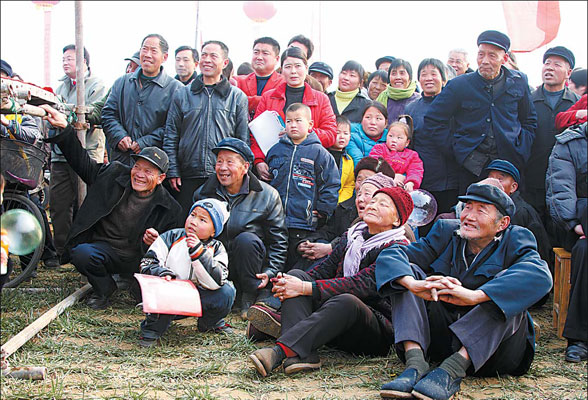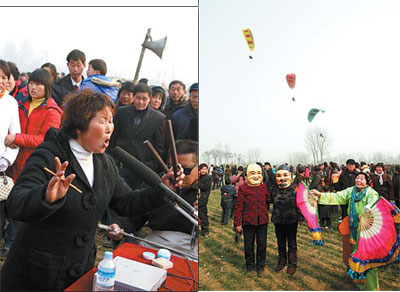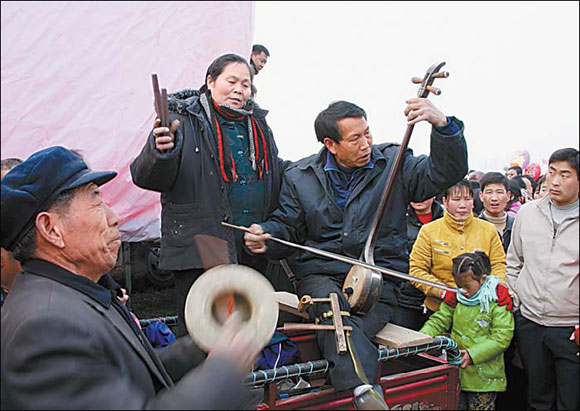Gather round, gather round
|
The young and old alike enjoy the storytelling shows. Photos by Wang Jianjun |
In metropolises like Beijing, Tianjin and Guangzhou, the centuries-old folk art of storytelling is relegated to a handful of teahouses, small theaters and even sauna bath centers.
|
Left: Fans from around the country gather for the annual Majie Storytellers and Balladeers Fair. Right: A folk artist recites a story. |
|
Audience members are immersed in a performance. |
This year's Majie Storytellers and Balladeers Fair ran for three days until Feb 19 in the central Chinese county.
Early in the morning, folk art performers and storytellers gathered in a vast open ground. The fair also drew a legion of amateur photographers, many of whom uploaded their images online.
Majie is a rural village some 7.5 km away from Baofeng county.
On the 13th day of the first month in the Chinese lunar calendar every year, thousands of storytellers and balladeers, including teenagers, come from near and far to perform.
Some offer family shows, with one member singing and others playing instruments.
Veteran players and new artists compete with each other; while audience members who can sing and tell stories are welcome to interact and even join the artists onstage.
Agents for folk artists roam among the audience, looking for potential stars.
Those chosen are then introduced to rural villagers who hire folk art performers for important family occasions such as birthdays, weddings, and Spring Festival celebrations in different parts of China.
Apart from traditional performances that borrow from local operas and classic novels such as Romance of the Three Kingdoms and Outlaws of the Marsh, many folk artists sing or recite their own stories about contemporary life.
In addition, about 30 performing art troupes from 12 provinces and regions performed folk shows, including Er Ren Zhuan from Northeast China, Jing Yun Da Gu from Beijing, Suzhou Pingtan from Jiangsu province, and the local favorite, Henan Zhuizi.
|
Left: A balladeer performs. Right:The annual fair creates a festival atmosphere in the village. |
Having been staged for over 700 years, it is the longest running fair of its kind, local organizers say.
The fair began in the Yuan Dynasty (1271-1368), local records show.
The largest fair in the early Qing Dynasty (1644-1911) reportedly attracted some 2,700 folk artists.
The annual event even ran during World War II and the "cultural revolution" (1966-76). In recent years, the festival has expanded with support from local authorities and businesses.
Against the backdrop of China's rapid economic boom and globalization, the folk art fair has evolved into a grand gathering where people not only enjoy performances but also make contacts and promote local commodities.
The Majie Storytellers and Balladeers Fair was listed as an intangible cultural heritage, under State protection, in 2006.
|
A family show. |
(China Daily 02/29/2008 page18)



















